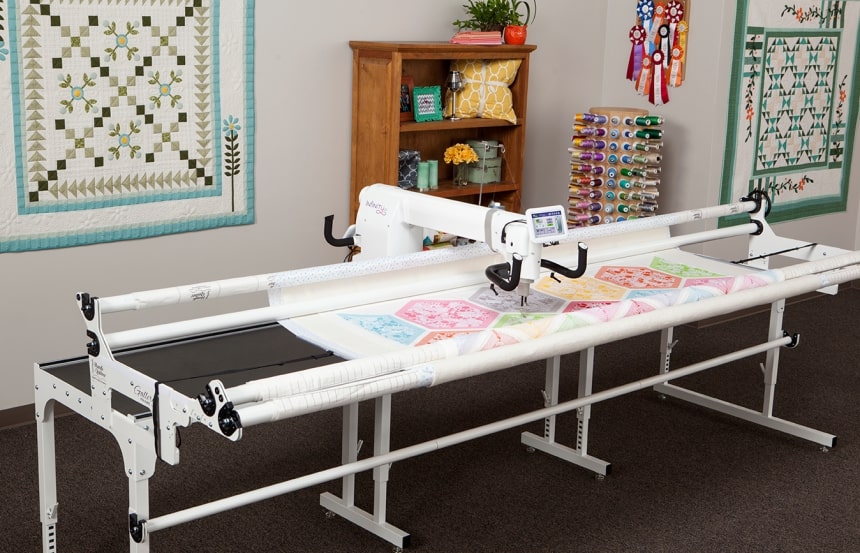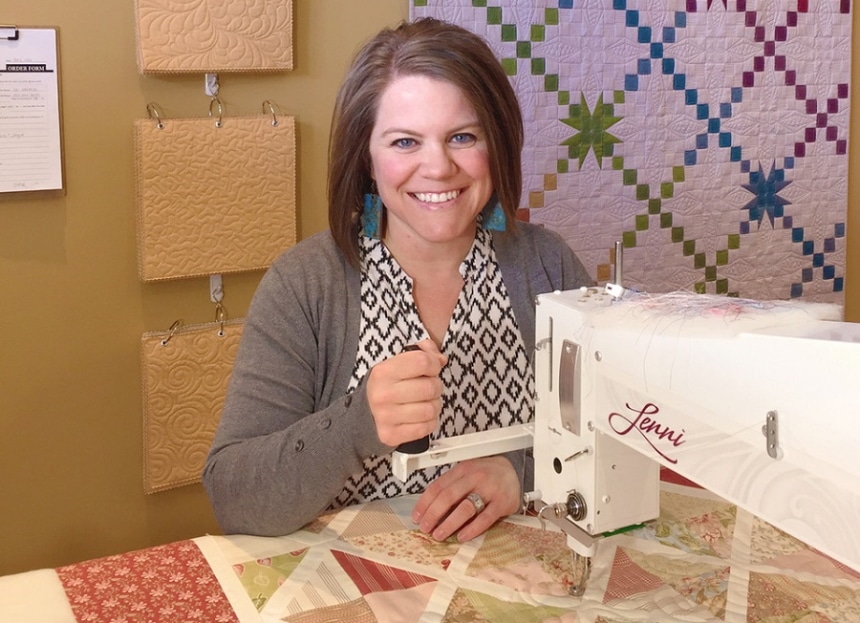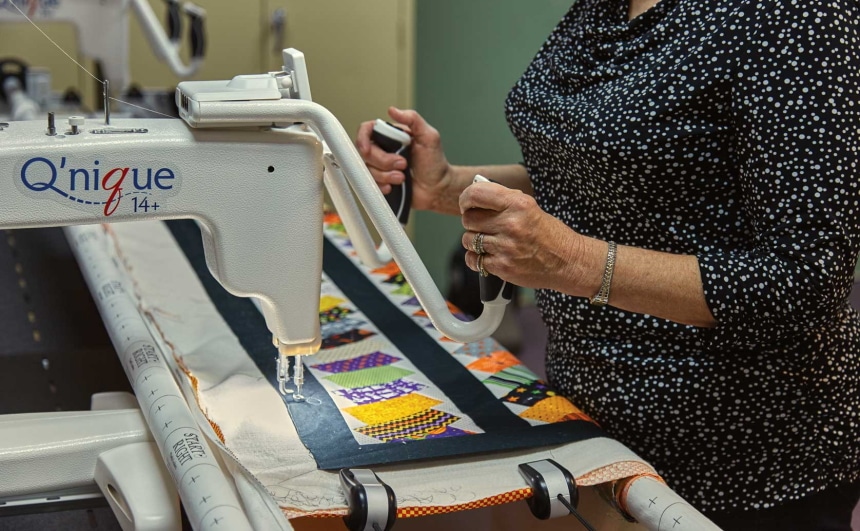

The quilting field has transitioned from what it was in the 1920s. Today, you have the option to quilt using your hands or a machine. The long-arm quilting machine has helped many people start the beautiful art of quilting. But let us first understand what long-arm quilting is.

Long-arm quilting is the process whereby you use a long-arm quilting machine. By using this machine, you can easily sew the quilt top, the quilt backing, and the batting to make a complete quilt. This type of quilting allows you to set the three layers of fabric on a frame and sew them all at once. It is the machine that rolls either vertically or horizontally hence allowing it to quilt while the fabric remains still. The machine can be operated manually or using a computer.
While hand quilting has been around for thousands of years, it wasn’t until 1871 when the quilting machine was invented. This earlier machine only had two bars that let a quilter move the fabric together with the frame beneath the machine. In the next seven years, though, a lot of modifications were made on this quilting machine to give us what we now know as the long-arm quilting machine. And by the turn of the century, there were plentiful of this machine’s patents and designs. For the longest time now, quilting machines have managed to excite newbies and veteran quilters and thus remaining relevant.
Today, there are two major quilting styles you can go for with a long-arm quilting machine. If you are looking to create sophisticated designs and quilts, some machines come equipped with computers that create pantograph style design on a quilt top.

Hand quilting consumes typically a lot of time. You will find it to be particularly challenging to make large quilts, even if you have a quilting machine. With the help of a long-arm quilting machine, you get to save a lot of time. This is why, in recent years, more and more people are investing in this machine. Moreover, people who love quilts and who have sewing machines get to save some time after they have made their quilts. They can take their quilts to a professional long-arm quilter who then takes a short time to produce some brilliant artwork at a reasonable cost.
If you are new to quilting, you may already have heard of a complex machine that makes quilts within minutes. The quilting machine was invented close to the turn of 1900. Over the years, it has been used by professional quilters to produce excellent designs and patterns. There is a need to understand what a long-arm quilting machine is and what benefits it affords you as a quilter.
A long-arm quilting machine was a plain and straightforward machine when it was invented in 1871. It came with a quilting frame and two bars. Then, users moved the quilting frame together with the quilt under the machine to make straight lines. Today, this quilting machine has an expansive frame measuring about 3 meters (9.8 ft) width by 4.25 meters (13 ft) in length. The table has a plastic part under where a pantograph is placed. The head of the machine boasts of industrial standard and length of at least 19 inches. The machine has several rollers on which you are supposed to attach your fabrics.
A long-arm quilting machine is a piece of large quilting equipment made to help you produce quilts more efficiently, especially if you are thinking of large quilts. It enables you to quilt a particular area before advancing the quilt. They require quite some investment both in money and space. It is a dream machine for many quilters.

Your long-arm is made up of a machine and the frame. A majority of long-arm frames come with rails or rollers that are meant to serve different functions during the quilting process. Here are easy to follow steps on how to quilt using a long-arm machine:
The long-arm quilting machine is increasingly becoming popular in the quilting world. This is so mainly because the machine is a lot of fun to use, but it also presents you with the incredible ability to make amazing patterns over large pieces of quilts. Even though the machine is a bit expensive and some training is necessary for anyone who wishes to own it, the reward will be reaped for decades to come. For a quilter who is thinking of going professional, there is no other better investment to think of.
I have A quilt that is finished all three layers sewed. Can you use an long arm quilt to “quilt” a design on it since it is already sewn? Thank you